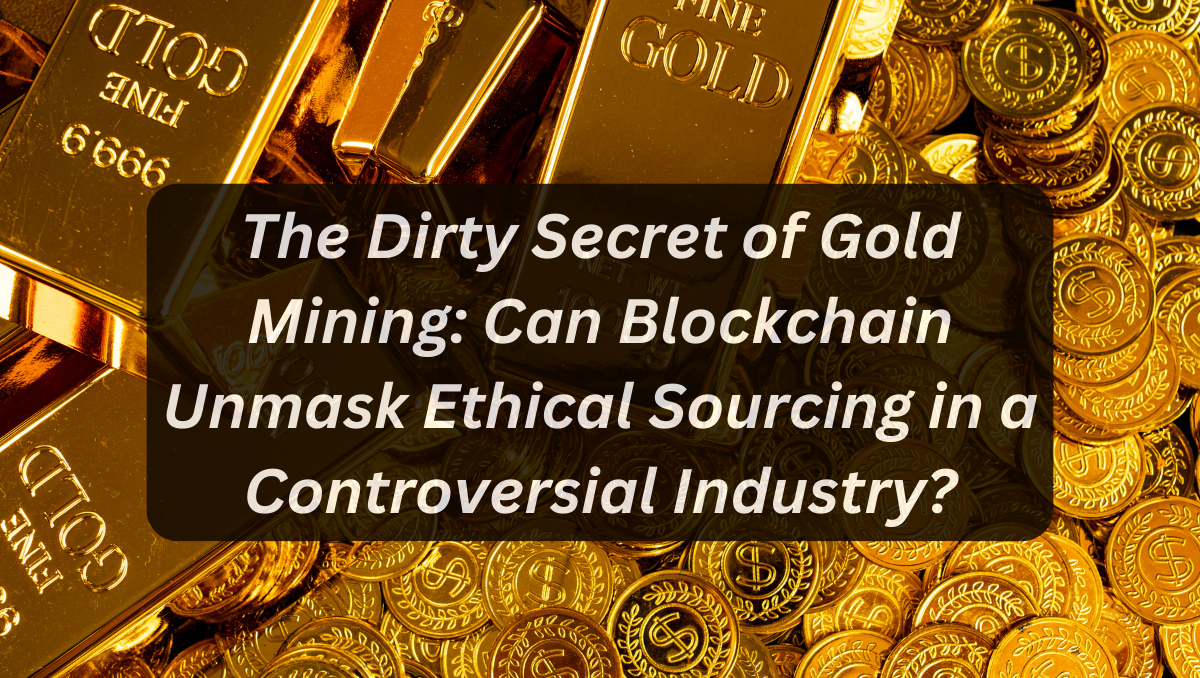In the glittering world of gold, where every ounce is a symbol of wealth and power, a shadowy underbelly has long troubled investors and consumers alike. Gold mining, while lucrative, has been mired in issues of unethical practices, environmental degradation, and conflict financing. Today, as technology reshapes industries, blockchain emerges as a potential game-changer—offering unprecedented traceability and the promise of conflict-free, ethically sourced gold. But can blockchain truly cleanse the tarnished reputation of gold mining?
Unveiling the Controversy
The gold mining industry is often criticized for its lack of transparency. Traditional supply chains are complex and fragmented, making it difficult to verify the origins of gold. Reports of labor exploitation, environmental harm, and financing of conflicts have fueled calls for reform. In this murky landscape, consumers and investors demand proof that the gold they purchase is ethically sourced.
Blockchain technology, with its decentralized, immutable ledger, offers a tantalizing solution. By recording every transaction from mine to market, blockchain can provide an unbroken chain of custody for gold. This means that every gram of gold can be traced back to its source, ensuring compliance with ethical and environmental standards.
The Blockchain Revolution in Gold Sourcing
Blockchain’s potential to revolutionize gold sourcing lies in its ability to bring transparency and trust to an industry long plagued by secrecy. Through digital tokens and smart contracts, blockchain platforms can certify that gold is mined under fair labor conditions and without funding conflicts. These platforms work alongside traditional certification bodies to provide digital proof of ethical practices, thereby building a bridge between ancient value and modern technology.
The following table offers a comparative look at traditional gold supply chains versus blockchain-enhanced sourcing methods:
| Aspect | Traditional Gold Supply Chain | Blockchain-Enabled Gold Sourcing |
|---|---|---|
| Transparency | Opaque, multi-layered, and difficult to audit | Real-time, immutable records accessible globally |
| Traceability | Fragmented; prone to human error | End-to-end traceability from mine to market |
| Ethical Verification | Reliant on third-party audits, often inconsistent | Digital certifications and smart contracts ensuring conflict-free sourcing |
| Environmental Impact | Hard to monitor and verify | Blockchain integration with ESG data for sustainable practices |
| Consumer Trust | Often questioned due to lack of clear provenance | Increased trust through verified, transparent supply chain |
*These comparisons highlight blockchain’s potential to transform an industry where ethical and environmental concerns are paramount.
Investment Implications
For investors, the promise of ethically sourced gold is more than a moral choice—it’s a strategic one. As consumers become more environmentally and socially conscious, the demand for “green gold” is on the rise. Companies that adopt blockchain for gold sourcing can not only mitigate reputational risks but also command premium pricing. Institutional investors, too, are increasingly factoring in ESG (Environmental, Social, and Governance) criteria when allocating assets. Transparent, blockchain-verified gold is fast becoming an attractive option for those looking to safeguard their portfolios with an ethical touch.
The Road Ahead: Challenges and Opportunities
While blockchain holds tremendous promise, its widespread adoption in gold mining is not without challenges. Integrating blockchain into a traditionally opaque industry requires collaboration among miners, regulators, and technology providers. Standardization of protocols, ensuring data accuracy, and overcoming resistance from entrenched interests are hurdles that must be navigated.
However, pilot projects and early adopters are already demonstrating success. By linking blockchain with traditional certification processes, the industry is moving toward a future where every ounce of gold is accounted for and ethically verified. As this technology matures, we can expect a ripple effect—driving not only higher consumer trust but also a more sustainable and responsible mining industry.
In Conclusion
The integration of blockchain into gold mining has the potential to unearth the truth behind one of the world’s most lucrative yet controversial industries. By ensuring transparency, traceability, and ethical sourcing, blockchain could redefine the value of gold—transforming it from a symbol of unchecked opulence to one of responsible wealth. For investors and consumers alike, this shift represents a new era where technology and ethics converge, safeguarding not only financial futures but also the integrity of one of humanity’s oldest treasures.
Stay tuned as we continue to explore how blockchain is reshaping the investment landscape, one verified transaction at a time. In a world where every decision counts, the promise of ethical, transparent gold is not just a trend—it’s the future of responsible investing.
